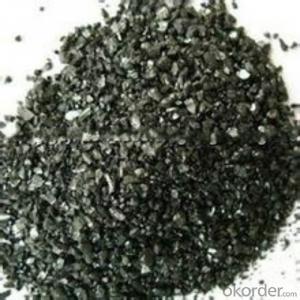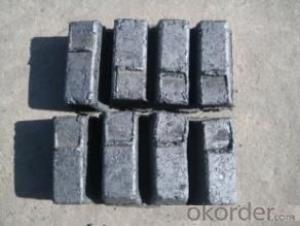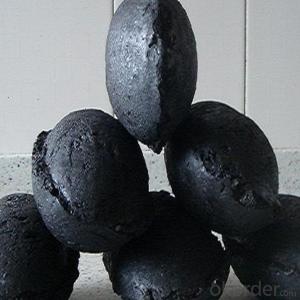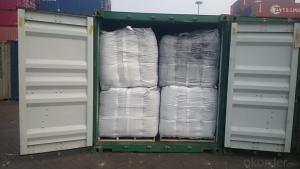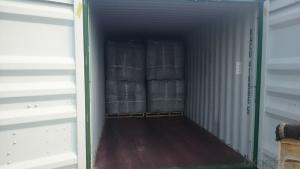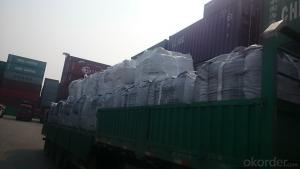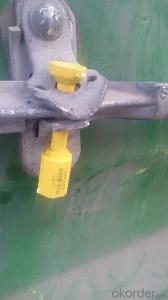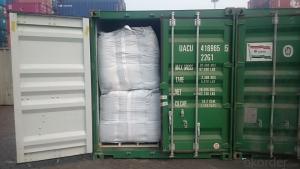GPC with lower Sulphur0.03% max in 0.5% H2O
- Loading Port:
- Tianjin
- Payment Terms:
- TT OR LC
- Min Order Qty:
- 24 m.t.
- Supply Capability:
- 5005 m.t./month
OKorder Service Pledge
OKorder Financial Service
You Might Also Like
Introduction:
GPC has good characteristics with low ash, low resistivity, low sulphur, high carbon and high density. It is the best material for high quality carbon products. It is used as carbon additive in steel industry or fuel.
Features:
1.Our strong team provide you reliable service that make you feel purchasing is more easierit is playing more and more important role in the industry
2. We ensure that we can supply capability with competitive price.
3. Work strictly to guarantee product quality,
4. Highest standard of integrity. Guarantee customer's benefit.
5. Supplying Pet Coke, Met coke, Foundry Coke, Carbon Raiser etc.it is playing more and more important role in the industry
Specifications:
F.C.% | 95MIN | 94MIN | 93MIN | 92MIN | 90MIN | 85MIN | 84MIN |
ASH % | 4MAX | 5MAX | 6 MAX | 6.5MAX | 8.5MAX | 12MAX | 13MAX |
V.M.% | 1 MAX | 1MAX | 1.0MAX | 1.5MAX | 1.5MAX | 3 MAX | 3 MAX |
SULFUR % | 0.3MAX | 0.3MAX | 0.3MAX | 0.35MAX | 0.35MAX | 0.5MAX | 0.5MAX |
MOISTURE % | 0.5MAX | 0.5MAX | 0.5MAX | 0.5MAX | 0.5MAX | 1MAX | 1MAX |
Pictures

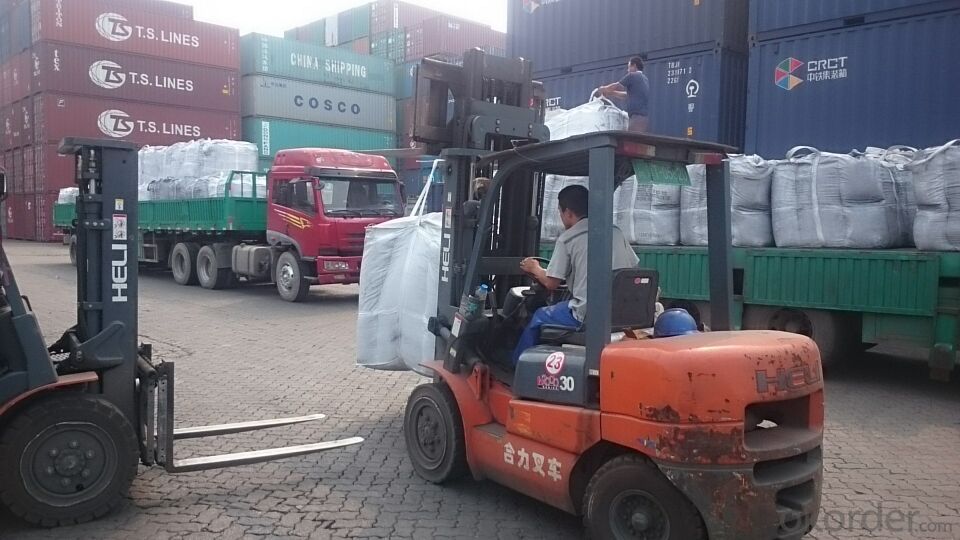
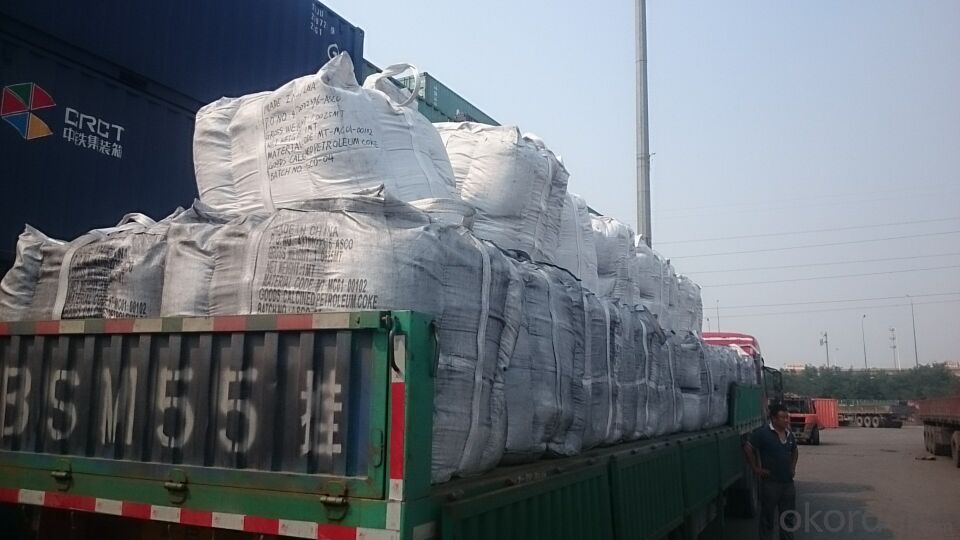
FAQ:
1. Your specification is not very suitable for us.
Please offer us specific indicators by TM or email. We will give you feedback as soon as possible.
2. When can I get the price?
We usually quote within 24 hours after getting your detailed requirements, like size, quantity etc. .
If it is an urgent order, you can call us directly.
3. Do you provide samples?
Yes, samples are available for you to check our quality.
Samples delivery time will be about 3-10 days.
5. What is your terms of delivery?
We accept FOB, CFR, CIF, EXW, etc. You can choose the most convenient way for you. Besides that,
we can also shipping by Air and Express.
6. Product packaging?
We are packed in bulk ship or in ton bag or placing in container or according to your requirements.
7. Notice
please note that the price on Alibaba is a rough price. The actual price will depends on raw materials, exchange rate wage and your order quantity .Hope to cooperation with you, thanks !
- Q: How does carbon affect the formation of acidification in lakes?
- Lakes undergo acidification due to the significant role played by carbon dioxide (CO2). Human activities, such as burning fossil fuels, release carbon dioxide into the atmosphere. This carbon dioxide can then be absorbed by lakes, resulting in the formation of carbonic acid (H2CO3), a weak acid. When carbonic acid interacts with water, it dissociates into hydrogen ions (H+) and bicarbonate ions (HCO3-). The increase in hydrogen ions causes a decrease in pH levels, making the water more acidic. This process is commonly referred to as acidification. The acidification of lakes can have detrimental effects on aquatic ecosystems. It negatively impacts the physiology and behavior of various species, including fish, amphibians, and invertebrates. Furthermore, the eggs and larvae of these organisms can be damaged by acidic waters, hindering their growth and survival. Acidification also has the potential to disrupt the composition and abundance of phytoplankton, which are vital for maintaining the overall health of the ecosystem. Additionally, high levels of acidity can result in the leaching of toxic metals, such as aluminum, from the surrounding soil and rocks. These toxic metals then dissolve in the water, posing an additional threat to aquatic organisms. Acidification can also disrupt the nutrient cycles in lakes, ultimately affecting the availability of essential nutrients for plants and animals. To summarize, the presence of carbon dioxide in the atmosphere contributes to the acidification of lakes when it is absorbed by water. This acidification has a range of negative impacts on the aquatic ecosystem, including altered physiology, impaired reproduction, and disrupted nutrient cycles. It is imperative to reduce carbon emissions and mitigate the effects of acidification to safeguard the health and diversity of lake ecosystems.
- Q: Iron and steel are different in terms of carbon content
- That is, high manganese content, less nickel or nickel free stainless steel. This stainless steel market costs more than 1000 yuan per ton of stainless steel with nickel. Some dealers is the use of good people are not on the stainless steel magnet suction misunderstanding, to deceive consumers, so the price as high with expensive stainless steel.There are more than 100 kinds of stainless steel, and the characteristics and functions are different. General decoration, landscape, sculpture using austenitic stainless steel. Because of the low thermal conductivity of austenitic stainless steel, using it as a kettle, wok, rice cooker is not appropriate, will use a lot of energy, but also to extend the boiling water cooking time. Using ferritic stainless steel as a wok and rice cooker, not only has excellent corrosion resistance, but also its thermal conductivity is nearly half higher than that of austenitic stainless steel.
- Q: How is carbon used in the production of ink?
- Carbon is used in the production of ink as a pigment, providing the black color commonly seen in inks.
- Q: What are the environmental impacts of burning fossil fuels?
- Burning fossil fuels has significant environmental impacts that contribute to climate change and air pollution. When fossil fuels such as coal, oil, and natural gas are burned, they release greenhouse gases, primarily carbon dioxide (CO2), into the atmosphere. These greenhouse gases trap heat, causing global warming and climate change. The increased concentration of CO2 in the atmosphere is the main driver of global warming, leading to rising temperatures and shifts in weather patterns. This, in turn, results in more frequent and severe natural disasters like hurricanes, droughts, and floods. The melting of polar ice caps and glaciers is also accelerated, leading to rising sea levels, which pose a threat to coastal communities and ecosystems. In addition to climate change, burning fossil fuels releases other harmful air pollutants, such as nitrogen oxides (NOx) and sulfur dioxide (SO2). These pollutants contribute to the formation of smog and acid rain, which have detrimental effects on human health, agriculture, and ecosystems. Furthermore, the extraction and transportation of fossil fuels cause environmental degradation. Activities like mining for coal or drilling for oil can lead to deforestation, habitat destruction, and soil and water pollution. Oil spills from offshore drilling operations have devastating consequences for marine life and ecosystems, as witnessed in incidents like the Deepwater Horizon disaster in the Gulf of Mexico. Overall, the environmental impacts of burning fossil fuels are far-reaching and severe. Transitioning to cleaner and renewable energy sources is crucial to mitigate climate change, reduce air pollution, and safeguard our planet for future generations.
- Q: How does carbon impact food production?
- Carbon impacts food production in several ways. Firstly, carbon dioxide (CO2) is a major greenhouse gas that contributes to climate change. Increased levels of CO2 in the atmosphere lead to higher temperatures, altered rainfall patterns, and more frequent extreme weather events, all of which can negatively affect crop growth and productivity. For example, excessive heat can reduce crop yields and quality, while intense rainfall or droughts can cause flooding or water scarcity, respectively, both of which can damage crops and reduce agricultural productivity. Furthermore, carbon emissions from agricultural practices, such as the use of synthetic fertilizers, deforestation for agriculture, and livestock production, contribute to the overall carbon footprint of the food system. These emissions exacerbate climate change, creating a vicious cycle where climate change negatively impacts food production, while food production contributes to climate change. Additionally, carbon emissions from the transportation and processing of food also impact its production. The transportation of food over long distances, often involving the use of fossil fuels, results in carbon emissions. Similarly, the processing and packaging of food require energy, often derived from fossil fuels, which further contributes to carbon emissions. To mitigate the carbon impact on food production, sustainable agricultural practices need to be adopted. This includes practices such as agroforestry, organic farming, and precision agriculture, which can help sequester carbon in soils, reduce the reliance on synthetic fertilizers, and improve overall soil health. Additionally, reducing food waste and promoting local and seasonal food consumption can reduce carbon emissions associated with transportation and processing. Overall, carbon impacts food production through its contribution to climate change and associated extreme weather events, as well as through emissions generated from agricultural practices and food processing. Addressing these impacts is crucial for ensuring food security and sustainability in the face of climate change.
- Q: I want to know why the ATP in the five carbon sugar is a DNA RNA??
- ATP (adenosine-triphosphate) Chinese name three phosphate adenosine, also called ATP (adenosine three phosphate), referred to as ATP, which A said adenosine, T said the number is three, P said that the phosphate group, connecting three phosphate groups. An adenosine ribose adenine nucleoside by connection formation.If it is deoxyribonucleic acid, it is called three phosphate adenine nucleoside, or dATP
- Q: DNF new advanced furnace rock carbon reinforcement +10 50 powder weapons, the upper 11 probability of success is how much, how many advanced furnace rock carbon?
- Specifically, for a random item / skill, there is an initial probability, called C. (for each item / skills are different) for example, roaming learned a 10 crit, so he first attack crit rate is C, if not crit, then the next attack, the system will take the chance to crit increased to 2C, if not a crit, then to improve to 3C... Until a crit, and start all over. The next chance of crit returns to the very beginning of C. (obviously, if has not crit, so after a certain number of attacks on X X*C>1, then this will surely be a crit) this is our game in random, many people may have noticed that some of our props inside the game, such as Tara jewelry sets BUFF probability is 1%, but in fact the BUFF probability is much more than 1%. Many props are like this, such as the title of death, robot necklace...... The odds of a low probability are high. The reason is that everything in the game is pseudo random, and our random values are always superimposed, that is to say, definitely. Strengthening equipment is the reverse, for the first time is 100%, and then multiplied by a C, has been multiplied to the probability of infinity approaching 0...... So the cushion works in theory. Believe to see, understand the players have already understood, want to play high carbon to the biggest use, depend on mat. After understanding this point of view we can count the cost of the 20 high carbon equipment 8 yuan then taking yxb:rmb1:20 as an example, if more than 160W will use cost-effective equipment than carbon somehow expensive ~ here is to provide you a way
- Q: What is carbon offsetting in the hospitality industry?
- The hospitality industry engages in carbon offsetting as a means of counteracting the greenhouse gas emissions generated by hotels, resorts, and other businesses in the sector. This practice serves to offset the carbon footprint resulting from various activities within the industry, including energy consumption, transportation, waste management, and water usage. To engage in carbon offsetting, hospitality establishments first calculate the quantity of carbon dioxide or other greenhouse gases they emit. They then invest in projects aimed at reducing emissions in other locations. Examples of such projects include initiatives focused on renewable energy, reforestation, or energy efficiency. Through supporting these projects, the hospitality industry strives to offset or neutralize its own carbon emissions and thereby minimize its impact on climate change. Hotels and resorts have the option to purchase carbon offsets from specialized organizations that facilitate carbon offset projects. These organizations ensure that the offsets are verified and adhere to recognized standards, such as the Verified Carbon Standard or the Gold Standard. By investing in verified offsets, the hospitality industry can have confidence that their contributions effectively contribute to reducing global greenhouse gas emissions. Carbon offsetting in the hospitality industry not only showcases environmental responsibility but also offers economic advantages. A growing number of travelers are increasingly conscious of the environmental consequences associated with their accommodation choices. As a result, they actively seek out hotels and resorts that prioritize sustainability. By implementing carbon offsetting programs, hospitality businesses can attract environmentally conscious guests and stand out in a competitive market. Moreover, carbon offsetting is just one component of a wider sustainability strategy within the hospitality industry. Many hotels and resorts are also adopting energy-efficient practices, implementing waste reduction measures, and promoting water conservation. By combining these efforts with carbon offsetting initiatives, the hospitality industry can contribute to a more sustainable future while simultaneously improving their financial performance. In conclusion, carbon offsetting in the hospitality industry involves investing in projects that reduce greenhouse gas emissions in order to compensate for the carbon footprint generated by hotels and resorts. This practice enables the industry to nullify its environmental impact and demonstrate a commitment to sustainability. Through the implementation of carbon offsetting programs, the hospitality industry can attract environmentally conscious guests, differentiate itself in the market, and contribute to a more sustainable future.
- Q: Is there a line cutting of carbon fibers?
- Technical characteristics:1 、 high strength and high efficiencyTensile strength is more than several times of ordinary steel, and the modulus of elasticity is better than that of steel. It has excellent creep resistance, corrosion resistance and seismic resistance.2 、 light weight and good flexibilityCarbon fiber is of high strength and quality only 1/5 of steel. It has higher toughness. It can be rolled and can be supplied in larger length without lapping.3, the construction is convenient, the construction quality is easy to guaranteeMaterial without pre processing, convenient process, allowing cross plate.4, good durability and corrosion resistanceAcid, alkali, salt and atmospheric corrosion, and should not be maintained regularly.
- Q: How are carbon nanotubes produced?
- Chemical vapor deposition (CVD) is the process responsible for the production of carbon nanotubes. This process utilizes a carbon-containing gas and a catalyst. The catalyst material, typically iron, nickel, or cobalt, is applied to a substrate. Subsequently, the substrate is placed in a high-temperature furnace, typically around 800-1000 degrees Celsius, and exposed to a carbon-containing gas, such as methane or ethylene. At high temperatures, the gas decomposes, releasing carbon atoms that adhere to the catalyst nanoparticles on the substrate. These carbon atoms arrange themselves in a hexagonal pattern, forming tube-like structures that grow vertically from the catalyst particles. The growth of the nanotubes is driven by the difference in carbon solubility between the catalyst and the growing tube. Various parameters, including temperature, gas flow rate, and catalyst material, can be adjusted to control the diameter, length, and alignment of the carbon nanotubes. Manipulating these parameters enables researchers to produce carbon nanotubes with specific characteristics suitable for different applications. It is important to note that other methods, such as arc discharge and laser ablation, can also be employed to produce carbon nanotubes. However, CVD is the most widely used method due to its scalability and ability to produce substantial quantities of nanotubes. Furthermore, CVD allows for the growth of vertically aligned nanotube arrays, which are highly sought after in numerous applications.
Send your message to us
GPC with lower Sulphur0.03% max in 0.5% H2O
- Loading Port:
- Tianjin
- Payment Terms:
- TT OR LC
- Min Order Qty:
- 24 m.t.
- Supply Capability:
- 5005 m.t./month
OKorder Service Pledge
OKorder Financial Service
Similar products
Hot products
Hot Searches
